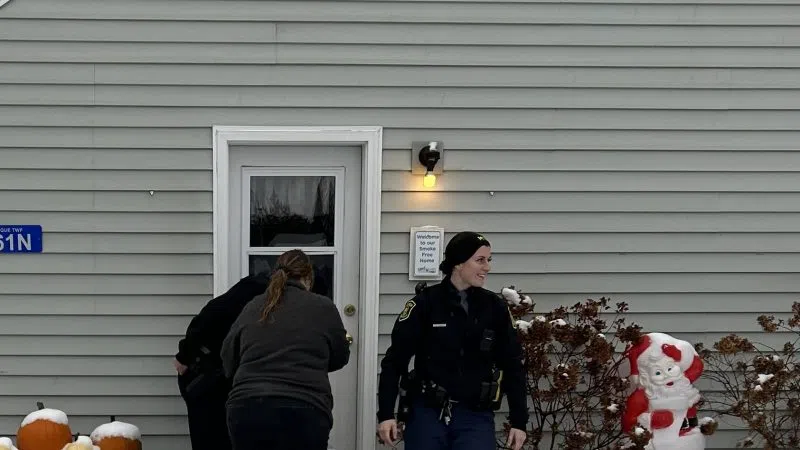As you set clocks back one hour when daylight saving time ends this weekend, adopt the life-saving habit of also changing the batteries in your smoke alarms. Eastern Standard Time officially begins on Sunday, November 4 at 2:00 a.m.
“The foam cushions, synthetic fabrics and plastics in household furnishings today produce more heat, more thick dark smoke, and more fire gases than in the past. Early warning of a fire improves the ability for your family to quickly exit your home,” said State Fire Marshal Kevin Sehlmeyer. “There needs to be a smoke alarm on every level of your home including the basement and a smoke alarm in every bedroom or sleeping area.”
Sehlmeyer reminds Michiganders to change the batteries, if they have 9-volt smoke alarms, when they change their clocks to fall back to Eastern Standard Time on Sunday morning.
According to the National Fire Protection Association (NFPA), 71 percent of smoke alarm failures are a result of missing, disconnected, or dead batteries. Never remove or disconnect batteries from detectors unless you are putting a new battery in the smoke alarm.
Check each smoke alarm monthly to ensure that it works. If you hear a chirp noisecoming from a smoke alarm it is most likely a warning of a low battery. Three (3) of every five (5) residential fire deaths in the United States occur in homes with smoke alarms with batteries removed or with dead batteries or no smoke alarms present.
Last year, residential structure fires in Michigan killed 96 citizens, and according to the National Fire Incident Reporting System (NFIRS), Michigan fire departments responded to 14,106 residential structure fires in 2017. So far in 2018, 100 civilians have died in residential structure fires and there have been 9,968 residential structure fires acrossMichigan.
The state fire marshal along with the NFPA recommend the following:
- Test smoke alarms monthly using the test button.
- Replace batteries twice a year or when the smoke alarm begins to chirp, signaling that the battery is running low.
- Make sure you have a smoke alarm in every bedroom or sleeping area and have one smoke alarm on every level of your home, including the basement.
- For added protection, consider an interconnect smoke alarm system, so when one smoke alarm sounds all the smoke alarms sound in the whole home.
- Hardwired smoke alarms are more reliable than those powered solely by batteries.
- Newer smoke alarms come with lithium batteries that can last up to ten (10) years.
- Every ten (10) years replace all your smoke alarms, or sooner if they do not respond properly when tested.
- Choose alarms that bear the label of a recognized testing laboratory.
For a list of nationally recognized testing laboratories go to:https://www.osha.gov/dts/otpca/nrtl/nrtllist.html
Carbon monoxide alarms are also critically important safety equipment in the home. Carbon monoxide is called the invisible killer. You cannot see or smell carbon monoxide. This poisonous gas can come from a variety of sources and can quickly incapacitate and kill its victims.
Carbon monoxide alarms should be installed on every level of the home and outside sleeping areas. Carbon monoxide alarms need fresh batteries at least once every year, unless they are powered by sealed ten (10) year batteries. Carbon monoxide alarms should be tested once a month to make sure they are working properly.
Sehlmeyer emphasized the importance of having working smoke alarms, and a home fire escape plan. He stressed that every family should know “Two Ways Out” and practice their home escape plan twice every year.
Sehlmeyer shared that during live fire growth experiments conducted in structures across the United States by Underwriters Laboratories (UL) and the International Society of Fire Service Instructors (ISFSI), occupants will have less than three (3)minutes, to escape a home fire due to the plastics and foam products in home furnishings today.
For information on smoke alarms and safety tips, visit the NFPA website atwww.nfpa.org/smokealarms. Visit the Bureau of Fire Services website atwww.michigan.gov/bfs for more fire safety information.
























